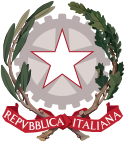|
2013 Italian local elections
The 2013 Italian local elections were held on different dates; most on 26–27 May, with a second round on 9–10 June. In Italy, direct elections were held in 720 municipalities: in each municipality (comune) were chosen mayor and members of the City Council. Of the 720 municipalities, 20 were provincial capitals and only 171 had a population higher than 15,000 inhabitants (10,000 for Sicily). In Friuli-Venezia Giulia the elections were held on 21–22 April with a second ballot on 5–6 May; all of 13 municipalities of the region voted for a new mayor and a new City Council concurrently with the Regional elections.[1] In Sicily the elections were held on 9–10 June with a second ballot on 23–24 June.[2] There weren't provincial elections around Italy because of their abolition (also in Sicily, since 2012), except for Friuli-Venezia Giulia: in this region citizens elected a new president and a new Provincial Council in Province of Udine. Voting SystemAll mayoral elections in Italy in cities with a population higher than 15,000 use the same voting system. Under this system voters express a direct choice for the mayor or an indirect choice voting for the party of the candidate's coalition. If no candidate receives at least 50% of votes, the top two candidates go to a second round after two weeks. This gives a result whereby the winning candidate may be able to claim majority support, although it is not guaranteed. The election of the City Council is based on a direct choice for the candidate with a preference vote: the candidate with the majority of the preferences is elected. The number of the seats for each party is determined proportionally. ResultsMajority of each coalition in 92 municipalities (comuni) with a population higher than 15,000:
Party resultsParty votes in 21 provincial capital municipalities:
Mayoral election resultsCity councils
Notes
|
|||||||||||||||||||||||||||||||||||||||||||||||||||||||||||||||||||||||||||||||||||||||||||||||||||||||||||||||||||||||||||||||||||||||||||||||||||||||||||||||||||||||||||||||||||||||||||||||||||||||||||||||||||||||||||||||||||||||||||||||||||||||||||||||||||||||||||||||||||||||||||||||||||||||||||||||||||||||||||||||||||||||||||||||||||||||||||||||||||||||||||||||||||||||||||||||||
